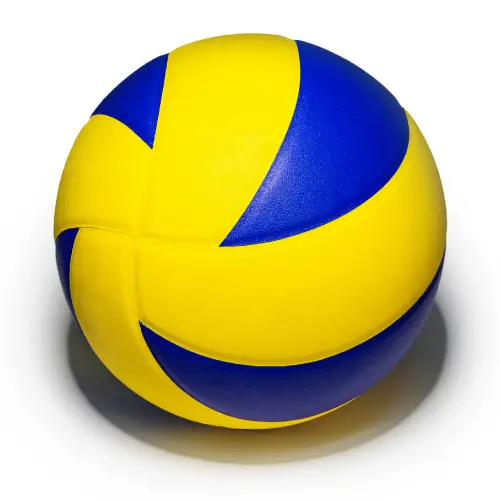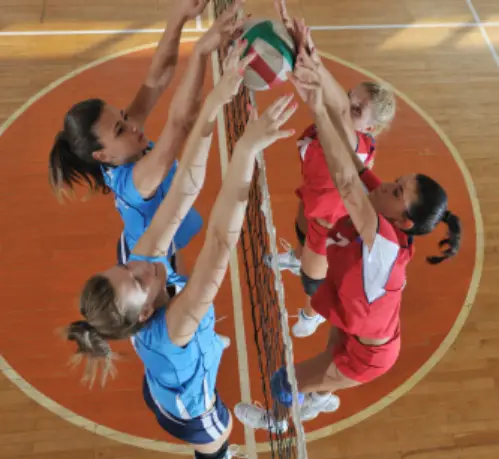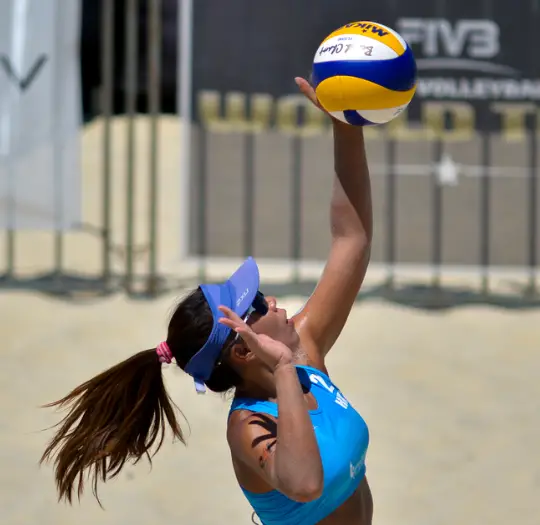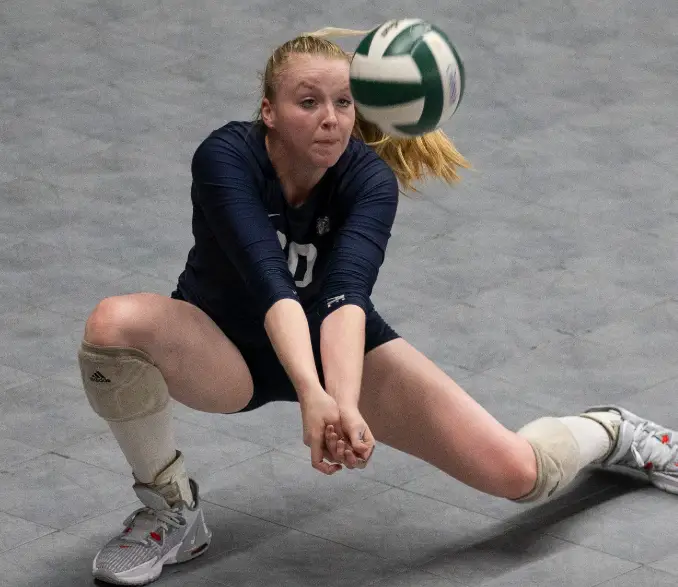As a volleyball player, one of the most crucial and challenging skills to master is digging. Digging is the action of preventing the ball from hitting the ground after an opponent’s attack or a serve. Good diggers have a strong sense of anticipation, quick reflexes, and a solid technique. In order to improve your digging technique and become a better defender, you need to focus on different elements of the skill.
What are the basic elements of the digging technique in volleyball?
Digging includes several fundamental aspects that need to be mastered in order to become an effective defender. These elements include:
– Footwork: Proper footwork is crucial to getting into a good position before attempting a dig. This involves quick and efficient movements with small steps taken on the balls of your feet to maintain a good center of gravity and balance.
– Anticipation: Being able to anticipate your opponent’s attack will give you an advantage in terms of positioning and reaction time, which are both critical for making successful digs. Anticipation involves reading the hitter’s body language and predicting where the ball will go.
– Body Position: Maintaining a stable body position before and during the dig is important to generate power, balance, and control over the ball. Keep your weight forward and your knees bent to get low on the ground, and keep your arms out in front of your body. Your shoulders should be square to the net and hips open to the hitter.
– Arm Swing: Swing your arms back and forth with a slight bend in your elbows as you prepare to dig. Once the ball comes close to you, extend your arms forward, palms facing up, in order to create a strong platform for the ball to bounce off of.
How can you improve your reflexes and reaction time for digging?
Quick reflexes and reaction time are essential for digging, as they allow you to get into position faster and make successful digs. Here are some tips to improve your reflexes and reaction time:
– Practice Reaction Drills: One of the best ways to improve your reaction time is to participate in drills that involve quick movements. For example, you could have a partner toss a ball to you randomly, and you need to react as quickly as possible to dig it.
– Train with a Reaction Ball: A reaction ball is a small rubber ball with an odd shape that bounces unpredictably. Using a reaction ball during practice can improve your hand-eye coordination and reaction time.
– Watch your Opponent: Anticipation is key, so pay close attention to your opponent’s body language and movements. Watch the hitter’s shoulder and hip rotation and anticipate where the ball is going.
– Increase your Agility: Regular agility training can help improve your reflexes and footwork. You can use cones, ladder drills or plyometrics to increase your agility.
What is the best way to anticipate your opponent’s attack and prepare for a dig?
Anticipating your opponent’s attack is crucial to give yourself the best chance to successfully dig. Here are some ways to anticipate your opponent’s movements and prepare for a dig:
– Study Film: Many volleyball teams record their games, and studying the footage of your opponents’ games can help you anticipate their tendencies and plays. Look for patterns in their attack and predict where the ball might be going.
– Watch the Server: Observe how the server approaches the ball and hits it. Analyzing their body language can give you an indication of a high or low serve and can help you prepare for a dig.
– Stay Alert: Pay attention to the hitter, the ball, and your surroundings at all times during a game. This ensures that you are ready to react quickly to the ball and anticipate the hitter’s motions.
– Communicate with your Teammates: Being able to communicate with your teammates is an essential part of anticipation. You can call out the hitter’s tendencies, such as their rotation, and prepare your team for it.
How can you improve your footwork for better positioning in digging?
Quick and efficient footwork is necessary to get into a good defensive position before attempting to make a dig. Some tips to improve your footwork include:
– Stay Light on your Feet: Staying on the balls of your feet is an important factor in keeping your center of gravity. Keeping light on your feet helps you move quickly and with precision.
– Quick and Small Steps: In order to move quickly, you need to take quick and small steps rather than long strides. Take small steps on the balls of your feet, position yourself to the right or left depending on where the hitter is headed
– Practice Shuffle Steps: Shuffle steps are quick and small lateral movements that help you get into position quickly. These movements allow you to adjust your position and react efficiently to the hitter’s attack.
– Focus on Balance: A stable balance stance is critical for getting into a good position before making a dig. Focus on maintaining your balance with your weight forward and knees bent. Ensure that your feet are shoulder-width apart and your hips are open to the hitter.
How can you improve your digging form in terms of arm swing and body position?
In order to dig effectively, it’s essential to maintain proper arm swing and body position. Here are some tips to improve your digging form:
– Keep your Elbows Relaxed: When you’re preparing to make a dig, keep your elbows relaxed and slightly bent. Avoid locking them, as this can reduce your ability to generate power.
– Swing through the Ball: When the ball approaches you, extend your arms forward and swing through the ball with your hands together to create a strong platform. Be sure to finish your swing in front of your body.
– Maintain Good Body Position: Keep your knees bent and your body stable and balanced when preparing to make a dig. Your feet should be shoulder-width apart and your hips should be open to the hitter.
What are some drills that you can do to strengthen your digging technique?
Here are some drills that can help you develop and strengthen your digging technique:
– Partner Toss and Dig: Have a partner randomly toss a ball to you, and aim to dig it quickly in the right direction. Vary the speed, direction, and height of your partner’s toss.
– Triangle Passing: This drill requires three players. One player is the passer, the other two players are the hitters. The passer controls the game by passing the ball to the designated hitter, who then hits the ball back to the passer. The passer then passes the ball to the second designated hitter for a hit back to the passer. The goal is to pass and hit the ball accurately and quickly.
– Block and Dig: This drill improves anticipation, body position, and reaction time. It involves two players, one as a blocker and the other as a digger. The blocker attacks the ball from one side, and the digger must anticipate the block and dig it.
– Reading the Block: In this drill, a team is divided into two, with one half of the team acting as blockers and the other half acting as attackers. The attackers aim to hit the ball through the block, and the blockers must defend the net. This drill can improve a player’s ability to read the hitter’s body language and anticipate where the ball will go.
Conclusion
In conclusion, improving your digging technique is a continuous process that requires practice, dedication, and patience. By focusing on the different aspects of the skill, including footwork, anticipation, body position, arm swing, and drills, you can significantly improve your digging ability and contribute greatly to your team’s success. Remember to watch your opponents carefully, communicate with your teammates, stay light on your feet, and always practice with determination.







